Form 0920-1033 Att D HCW.EVD.expriskreport_SierraLeone
2014 Emergency Response to Ebola in West Africa: Data Collection for Assisting Foreign and International Entities to Conduct Public Health Activities
Att D HCW.EVD.expriskreport_SierraLeone
Healthcare Worker- Ebola Virus Disease Exposure Risk Report - Sierra Leone
OMB: 0920-1033

Form
Approved
OMB No.
0920-1033
Exp.
Date 04/30/2015
Date of completion of form (dd/mm/yy): _____________
PLEASE SEND COMPLETED FORM TO: _________________________________
Health-care workers (HCWs) and Ebola Virus Disease (EVD) exposure risk:
Case ID number: ____________________
Thank you for considering this study. The Sierra Leone Ministry of Health, together with the World Health Organization and the Centers for Disease Control are trying to learn more about how and why health care workers in Sierra Leone are getting Ebola virus disease. We want to learn more about how people are getting sick so that we can help prevent infections in the future. We will ask you some questions about what happened before you fell ill. If you agree, we would also like to ask some questions to your co-workers to learn more about what might have happened to make you ill. You will not be punished for practices that may have exposed you to Ebola virus infection and we will not share your information outside of study staff. We will record your name and address so that health workers can find you and make sure we only ask you these questions once. Only the study team can see your information and they will only look at your information when they are working on the study. All the information will be in locked computer files on a protected computer at WHO. Information will be summarized in reports. We will not report anything about you individually. You are free to choose whether or not to be in this study. You are also free to say no to any part of this study. You will not lose any of your usual health services or other benefits even if you say no. Even if you say yes, you may change your mind at any time. If you have questions or concerns, you can call Dr. Alie Wurie at the Ministry of Health at +232-076671100. (Provide card with phone # and name).
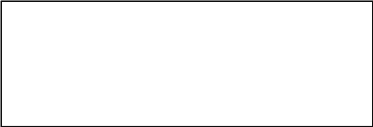
BASIC INFORMATION
Person being interviewed:
❏ Patient ❏ Co-worker (not supervisor)
❏ Patient’s supervisor ❏ Family member (specify): ______________________
❏ Other (specify): ______________________
Site of interview
❏ Home of patient ❏ Workplace of patient (specify): ____________________
❏ Holding center/ETU/CCC ❏ Other: ________________________
Case classification: ❏ Suspected ❏ Confirmed ❏ Unknown
Case status at evaluation: ❏ Alive ❏ Deceased (date: ___/___/___) ❏ Unknown

PATIENT (HCW) IDENTITY
Last name___________________ First Name________________ Second Name_________________
Date of birth (mm/dd/yy) ___/___/___ Age (years)_____ Sex ❏ M ❏ F
Village of residence _________________ District ____________ Nationality: _________________
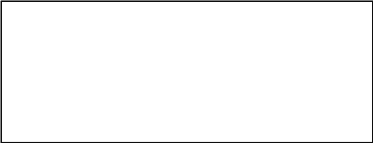
CLINICAL COURSE
Date of symptom onset ___/___/___ Date patient stopped working: ___/___/____
Date of first visit to healthcare facility: ___/___/___ Facility name: _________________
Was patient admitted at first visit? ❏ Yes ❏ No ❏ DK (don’t know)
If NO, what was the suspected diagnosis?
❏Suspect malaria ❏Suspect other infection
❏Suspect typhoid ❏Other: _________________________
If patient WAS NOT admitted at first presentation, please check all activities patient undertook/treatments patient received between symptom onset and isolation
❏ Took antimalarials ❏ Took ORAL antibiotics ❏ Took IV antibiotics ❏ Took NSAIDS
❏ Sought care with a traditional healer ❏ Sought care from a family member/friend
❏ Sought care from another healthcare worker outside of a healthcare facility

Public reporting burden of this collection of information is estimated to average 30 minutes per response, including the time for reviewing instructions, searching existing data sources, gathering and maintaining the data needed, and completing and reviewing the collection of information. An agency may not conduct or sponsor, and a person is not required to respond to a collection of information unless it displays a currently valid OMB control number. Send comments regarding this burden estimate or any other aspect of this collection of information, including suggestions for reducing this burden to CDC/ATSDR Information Collection Review Office, 1600 Clifton Road NE, MS D-74, Atlanta, Georgia 30333; ATTN: PRA (0920-1033).
❏ Went to a different healthcare facility for care
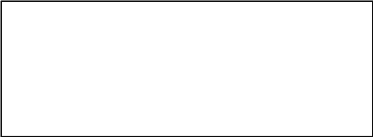 Was
patient ever isolated for their Ebola infection?
❏
Yes ❏
No ❏
DK
Was
patient ever isolated for their Ebola infection?
❏
Yes ❏
No ❏
DK
If YES, date of patient isolation: ___/___/___
Site of patient isolation:
❏ Holding center (specify): ___________________
❏ Alternate site/room at hospital specifically for healthcare worker isolation
❏ Other: ____________________________________
Was patient transferred to Ebola treatment center? ❏ Yes ❏ No ❏ DK
If YES, date of transfer: ___/____/_____
Ebola treatment center where patient treated: ________________
Ebola blood testing
Date of blood draw for testing ___/___/___ Date of confirmation: ___/___/___
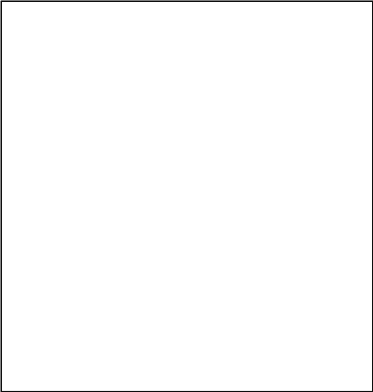
4. PATIENT’S OCCUPATION (tick the appropriate box and provide details if/when necessary)
❏ Ambulance driver ❏ Ambulance driver mate ❏ Burial team ❏ CHO ❏ CHA ❏ Cleaner
❏ Community health worker ❏ Contact tracer ❏ District medical officer ❏ Doctor
❏ Laboratory staff ❏ Midwife ❏ Morgue staff ❏ Porter
❏ Nurse ❏ Nurse’s Aide ❏ Office staff ❏ SECHN
❏ Security officer ❏ Surveillance officer ❏ Traditional healer ❏ Traditional birth attendant
❏ Other (specify): ________________
Primary work place at the time of infection:
❏ Ebola Treatment Center ❏ Ebola Care Unit ❏ “Transit”/”Holding” center ❏ Public hospital ❏ Community Care Center (CCC) ❏ Observational Interim Care Center (OICC)
❏ DHMT Office ❏Outpatient setting ❏ Laboratory ❏ Ambulance ❏ DK
❏ Other type of HCF:____________
If patient worked at a healthcare facility (HCF), provide HCF name: ____________________
If hospital or outpatient, setting, what service:
❏ General Care ❏ Maternity ❏ Laboratory ❏ Medicine ❏ Pediatric ❏ Surgery
❏ Emergency ❏ Blood Transfusion ❏ Administration ❏ Morgue
❏ Other (specify): ___________
At their primary occupation, was patient a volunteer? ❏ Yes ❏ No ❏ DK
ADDITIONAL work place (paid or voluntary) at the time of infection:
❏ Ebola Treatment Center ❏ Ebola Care Unit ❏ “Transit”/”Holding” center ❏ Public hospital
❏ Community Care Center (CCC) ❏ Observational Interim Care Center (OICC) ❏ DHMT Office
❏Outpatient setting ❏ Laboratory ❏ Ambulance ❏ DK ❏ Other type of HCF (specify):______
❏ Other NON-HCF (specify):___________________________________________________________
If hospital or clinical outpatient setting, what service:
❏ General Care ❏ Maternity ❏ Laboratory ❏ Medicine ❏ Pediatric ❏ Surgery
❏ Emergency ❏ Blood Transfusion ❏ Administration ❏ Morgue ❏Other (specify): ____
At the additional workplace, was patient a volunteer? ❏ Yes ❏ No ❏ DK
Was patient known to provide health-related care to neighbors, family, or others outside
of their work? ❏ Yes ❏ No ❏ DK (don’t know)
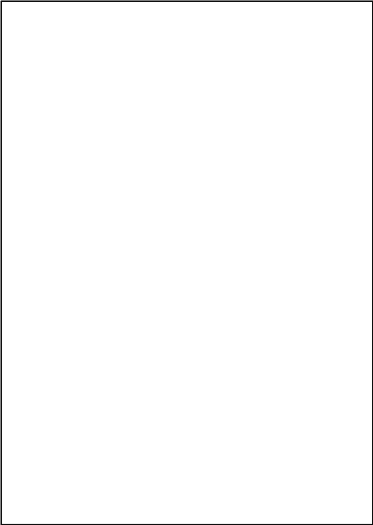 5.
EXPOSURES
5.
EXPOSURES
Workplace-associated activities that may have led to exposure (check all that apply):
❏ Provided general patient care (took vital signs, examined patients)
❏ Fed patients or administered oral medications ❏ Delivered babies
❏ Bathed or cleaned patients ❏Moved patients (touched patients)
❏ Gave injection ❏ Drew blood ❏ Performed fingerprick
❏ Recapped needle ❏ Discarded sharps
❏ Put in IV/handled line ❏ Placed/handled urinary catheter
❏ Cleaned blood/vomit/diarrhea ❏ Cleaned the patient room or ward
❏ Handled lab specimens ❏ Controlled bleeding ❏ Touched contaminated surfaces ❏ Performed invasive procedure ❏ Performed /assisted with surgery
❏ Moved dead bodies ❏ Performed autopsy
❏ Cleaned or disinfected latrines
❏ Handled waste ❏ Handled linen or clothes or mattresses (cleaners)
❏ Other: (specify) ____________________________
Contact with EVD patients outside the primary work facility
Did the HCW have contact* with anyone who had suspected/confirmed EVD outside of the primary work facility during the three weeks before their symptom onset?
❏ Yes ❏ No ❏ DK
If YES, specify relationship of EVD patient with HCW (check all that apply):
❏ Patient ❏ Other HCW ❏ Household member ❏ Other friend / relative ❏ None
Specify type of exposure:
❏ Provided general patient care (took vital signs, examined patients)
❏ Fed patients or administered oral medications ❏ Delivered babies
❏ Bathed or cleaned patients ❏Moved patients (touched patients)
❏ Gave injection ❏ Drew blood ❏ Performed fingerprick
❏ Recapped needle ❏ Discarded sharps
❏ Put in IV/handled line ❏ Placed/handled urinary catheter
❏ Cleaned blood/vomit/diarrhea ❏ Cleaned the patient room or ward
❏ Handled lab specimens ❏ Controlled bleeding ❏ Touched contaminated surfaces
❏ Performed invasive procedure ❏ Performed /assisted with surgery
❏ Moved dead bodies ❏ Performed autopsy
❏ Cleaned or disinfected latrines ❏ Handled waste
❏ Handled linen or clothes or mattresses (cleaners)
❏ Physically assisted patient in ambulance or other vehicle
❏ Touched patient during home visit (e.g., DSO or contact tracer)
❏ Other: (specify) ____________________________________________________
Did the HCW attend any funeral of someone who might have died of Ebola in the 3 weeks preceding the onset of the symptoms? ❏ Yes ❏ No ❏ DK
If YES, did the HCW participate in the preparation of burials that involved touching the dead body without adequate PPE (gloves, impermeable gown, impermeable head cover with neck protection, rubber boots, face mask and face shield or goggles)? ❏ Yes ❏ No ❏ DK
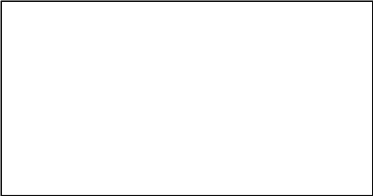 6.
MOST LIKELY EXPOSURE TO EVD
6.
MOST LIKELY EXPOSURE TO EVD
Did the interviewee describe any single exposure that most likely led to infection? ❏ Yes ❏ No ❏ DK
If No or DK, skip to question 7
If Yes, specify the date: ___/___/___ (dd/mm/yy)
Setting where suspected exposure occurred:
❏ Ebola Treatment Center ❏ Ebola Care Unit ❏ “Transit”/”Holding” center ❏ Public hospital
❏ Community Care Center (CCC) ❏ Observational Interim Care Center (OICC)
❏Outpatient setting ❏ Laboratory ❏ Ambulance ❏ DK
❏ Other type of HCF (specify):_________________________
❏ Patient’s home ❏ Someone else’s home (specify):________________
❏ Other community setting (specify) _____________________________
Mode of exposure:
❏ Needle
stick ❏Scalpel
cut
❏Blood/body
fluid splash on intact skin
❏
Blood/body fluid splash on non-intact skin ❏
Blood/body fluid splash on eye
❏
Blood/body fluid splash on mouth/lips ❏
Other (specify) __________________________

7. INFECTION PREVENTION AND CONTROL ASPECTS OF PRIMARY WORK PLACE
Use of PPE and Standard Precautions
At time of exposure, was a screening station set up at the primary work facility to separate suspect/possible Ebola patients from other patients? ❏ Yes ❏ No ❏ DK ❏ N/A (not applicable)
At time of exposure, were there spraying staff at primary work facility? ❏Yes ❏No ❏DK ❏N/A
If exposure was at work, was PPE available to the patient at time of exposure? ❏Yes ❏ No ❏ DK
If YES, which:
❏ Single gloves ❏ Double gloves ❏ Disposable gown ❏ Waterproof apron
❏ Coverall (Tyvek-like) ❏ Coverall (Tychem-like) ❏ Cap ❏ Hood
❏ Face shield ❏Face mask ❏Goggles ❏N-95 or above respirator
❏ Closed resistant shoes ❏ Shoe covers ❏ Rubber boots ❏ Leg covers
❏ Other (specify): ____________
If exposure was at work, was any PPE USED by patient at time of exposure? ❏ Yes ❏ No ❏ DK
If YES, which:
❏ Single gloves ❏ Double gloves ❏ Disposable gown ❏ Waterproof apron
❏ Coverall (Tyvek-like) ❏ Coverall (Tychem-like) ❏ Cap ❏ Hood
❏ Face shield ❏Face mask ❏Goggles ❏N-95 or above respirator
❏ Closed resistant shoes ❏ Shoe covers ❏ Rubber boots ❏ Leg covers
❏ Other (specify): ____________
If NO, why not?
❏ No PPE at facility ❏ PPE present, but did not think the situation required it
❏ PPE present, but did not know how to use ❏ PPE present, but forgot/neglected to use
❏ Other: _________________________________________________
Did the HCW apply duct tape to secure PPE? ❏ Yes ❏ No ❏ DK
Were hand hygiene products available at time of exposure? ❏ Yes ❏ No ❏ DK
If Yes, which: ❏ Running (tap) water ❏ Chlorinated water from reservoir
❏ Soap ❏ Disposable towels ❏ Alcohol antiseptic

About how many minutes did HCW stay in PPE** during each entry in isolation/ETU per day?__ mins
About how many times per day did HCW enter isolation/ETU in PPE? _____ times per day
About how many days did HCW work in isolation/ETU per week?___days ❏ Not applicable
Was HCW trained on infection prevention/control in the context of the Ebola outbreak? ❏ Yes ❏ No
If YES, please indicate the training organization below:
❏ National Government ❏ DHMT staff ❏ Hospital staff
❏ WHO ❏ CDC ❏ MSF ❏ UNMEER ❏ Other (specify): ___________________ ❏ Don’t know
Were other healthcare workers quarantined as a result of this HCW infection? ❏ Yes ❏ No ❏ DK
If YES, (approximate if exact number unknown), how many HCW were quarantined? ______
*Contact defined as the HCW touching, without proper personal protective equipment (PPE), a suspect or confirmed EVD patient or their bodily fluids
**PPE=gloves, impermeable gown or coverall, impermeable head cover with neck protection, rubber boots, face mask and face shield or goggles
Additional details of exposure or comments: ____________________________________________________________________________________________________________________________________________________________________________________________________________________________________________________________________________________________________________________________________________________________________________________________________________________________________________________________________________________________________________

ADMINISTRATIVE USE ONLY:
Is case in VHF? ❏ Yes ❏ No ❏ DK ❏ Not yet, but check back later (<1 month after onset)
If yes, is case marked as Healthcare Worker in VHF? ❏ Yes ❏ No
VHF case ID: ___________________
Version 4.0 24 December 2014 Page
| File Type | application/vnd.openxmlformats-officedocument.wordprocessingml.document |
| Author | FORMENTY, Pierre B.H. |
| File Modified | 0000-00-00 |
| File Created | 2021-01-25 |
© 2025 OMB.report | Privacy Policy